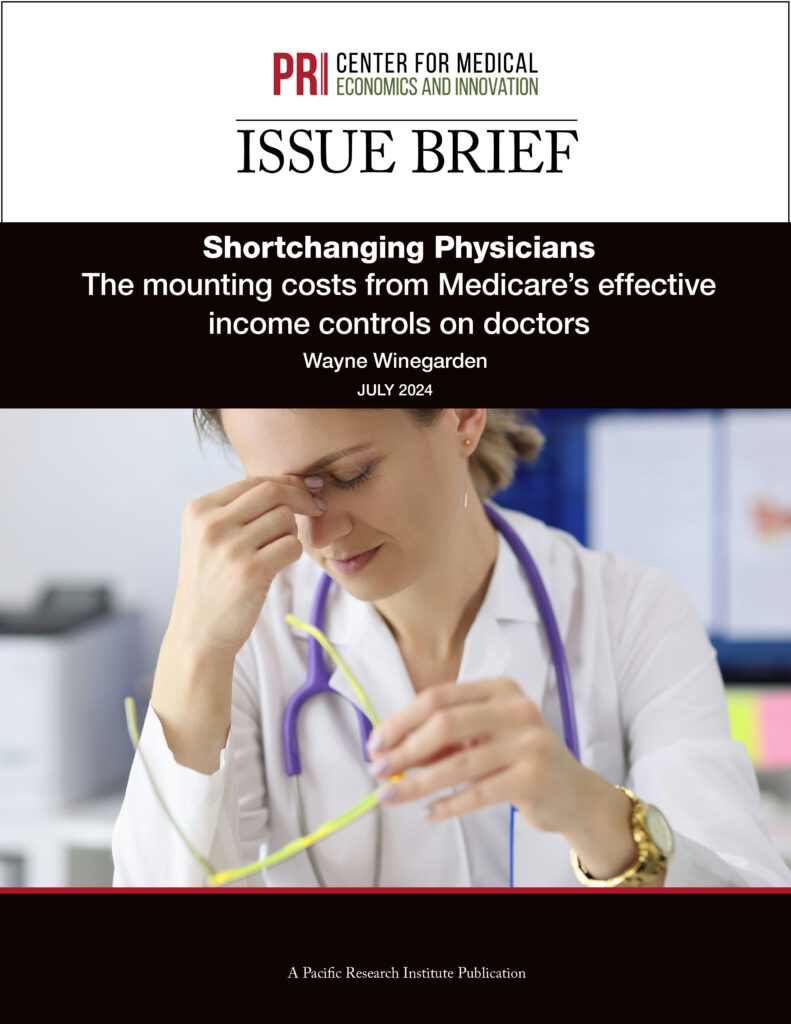New PRI Brief: Washington Must End Physician Price Controls, Reform Medicare Payment System to Prevent Doctor Shortages
 SACRAMENTO – A new brief released today by the Center for Medical Economics and Innovation at the nonpartisan Pacific Research Institute finds that artificially low reimbursement rates used by Medicare to contain costs are threatening patient care, and reform is needed to prevent future doctor shortages.
SACRAMENTO – A new brief released today by the Center for Medical Economics and Innovation at the nonpartisan Pacific Research Institute finds that artificially low reimbursement rates used by Medicare to contain costs are threatening patient care, and reform is needed to prevent future doctor shortages.
“Price controls used by government-run health care systems globally to contain costs lead to delays, lower quality, and worse health outcomes,” said Dr. Wayne Winegarden, director of PRI’s Center for Medical Economics and Innovation. “U.S. patients could also face doctor shortages unless Medicare’s low doctor reimbursement rates are reformed and proposals for single-payer health care are rejected.”
Doctor shortages are a common experience in government-run health care systems globally. According to a 2022 Our Care survey, 22% of Canadians do not have a family doctor or nurse practitioner, while the average number of doctors per 1,000 people in the United Kingdom was just 2.9 per 1,000 people, compared to 3.7 per 1,000 people in OECD European Union nations.
A growing driver of doctor shortages in the U.S. and around the world is inadequate doctor compensation, which arises because government-run health care systems such as Medicare impose increasingly uneconomical price controls on doctors to control rising costs. The problem would grow worse in the U.S. if a single-payer health care system is enacted.
Medicare’s low reimbursement rates bring real income losses for physicians as the fear of doctor shortages is growing. According to the brief:
- While average prices grew 27.4% from 2013 through 2022, reimbursement rates grew just 7.3% percent based on the average Medicare payment amount and 1.3% based on the average Medicare standardized payment amount (adjusting payments for geographic differences in payment rates).
- Between 2001 and 2024, consumer (78.4%), producer (83.7%), and health care (110.3%) prices grew more than double the increases in physician office prices (32.5%), documenting the income losses for doctors.
- Since 2020, physician office price increases (6.6%) continued to lag the growth in consumer (22.3%) and producer (38.7%) prices, though health care price increases slowed significantly (8.7%).
Unless the problem of low reimbursement rates is resolved, patients will have less access to care and increased wait times to see a doctor or specialist, while overall health care costs would ironically increase. Vulnerable and rural populations would be impacted the most.
Among the reforms suggested in the brief are:
- Indexing physician reimbursement rates to a cost index, such as the Medicare Economic Index, to prevent inflation from eroding physician incomes.
- Reforming the Merit-based Incentive Payment System (MIPS) program, which addresses problems associated with the doctor fee-for-service model and incentivizes value-based care, to reduce the costly burdens on providers and incentivize more innovative, patient-driven care.
The Pacific Research Institute (www.pacificresearch.org) champions freedom, opportunity, and personal responsibility through free-market policy ideas. Follow PRI on Facebook, Twitter, and LinkedIn.

